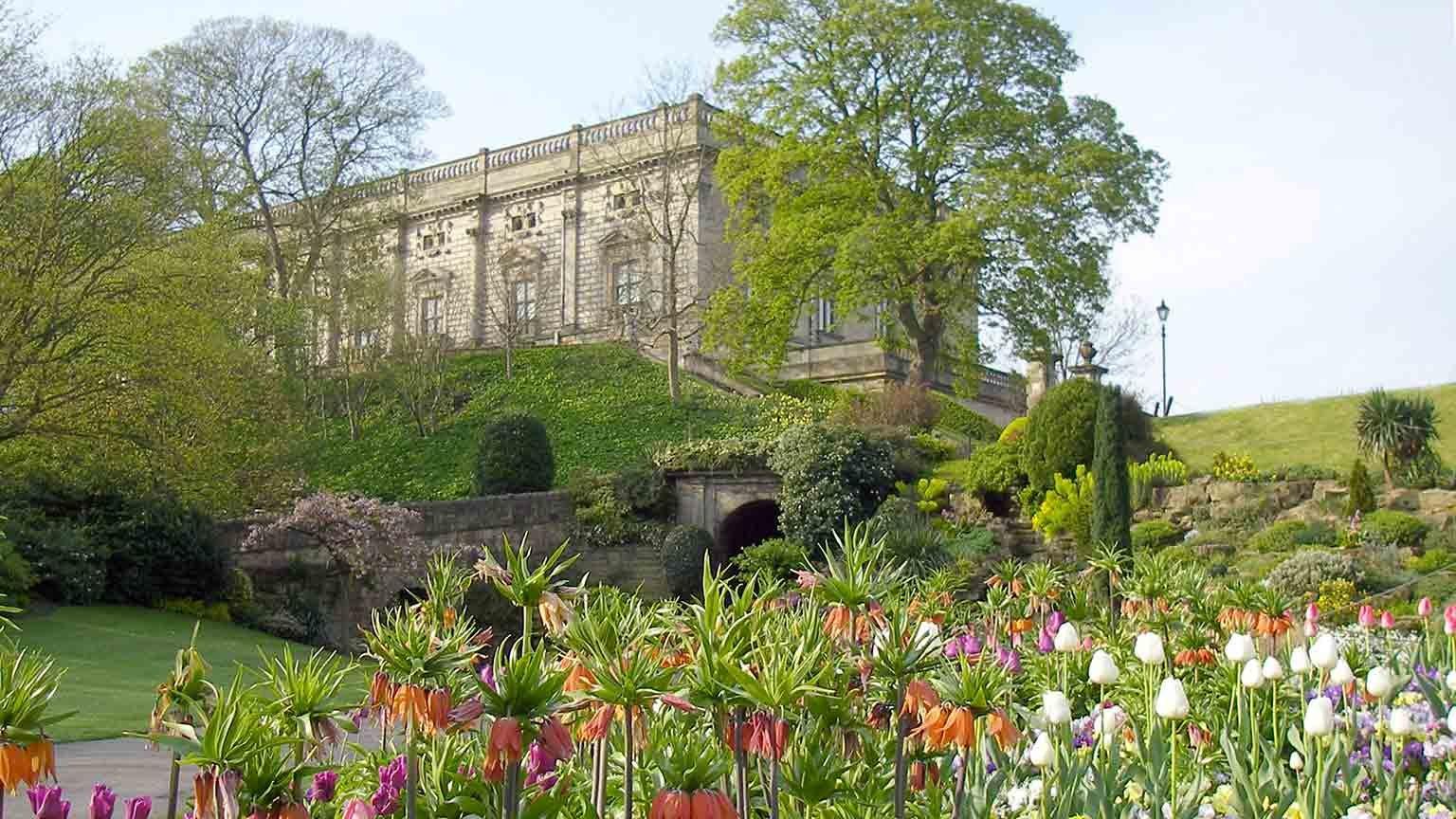
Conrad Atkinson was born in Cleator Moor, a small mining village on the west coast of Cumbria. After attending art schools in Liverpool and London he returned to Cumbria, where he makes provocative political work often concerned with the landscape, culture and hardships of the local people.
These three works have been chosen by Nottingham Museums and Galleries to reflect Atkinson’s diverse practice and to complement their existing collections.
Wordsworth’s Suit, a Savile Row pin-stripe embroidered with golden insects, was made in 2003 for an exhibition at Dove Cottage, the poet’s home in the Lake District. The accompanying socks are decorated in the same manner. Atkinson’s playful text describes the suit as the very one which Wordsworth wore when he and his sister strolled through the field of daffodils he later made famous in his poem. It therefore contains ‘pollen from the English native wild daffodil Narcissus pseudo-narcissus,’ writes Atkinson, explaining that this native daffodil is now threatened by genetically modified hybrids.
The photo collage Sellafield happens… shows the hand of an ex iron-ore miner, later a Sellafield worker, whose limb was disfigured when a mining bogey (truck) ran over it. The hand is coloured in the red that Atkinson says ‘reflects the same redness of most things in Cleator Moor, from the iron ore, the earth, the streets, the off-cut of pit props we used for our fires, the doorstops of iron ore… the men’s clothes on the way home from work looking like red silk’. An image of Sellafield nuclear power station is spray painted onto the hand, and pictures on each of the fingernails make reference to landscape and nature.
Sellafield happens… reflects Atkinson’s strong connection to iron-ore mining and to the power station. The poetic image communicates the damage these industries have done to workers and to the landscape of Cumbria.
The two ceramic landmines are unique examples (each one has different patterns) selected from a series of 30. Atkinson has been involved in anti-landmine campaigns since the 1990s and sees the weapons as inextricably linked to landscape. These beautifully decorated replicas aim to challenge the viewer by contrasting the familiar patterns found on domestic crockery with the horrific brutality of their function.
More information
Title of artwork, date
Three works, 1996-2003
Date supported
2016
Medium and material
1) Coloured and gold machine embroidery; 2) Ceramic, on glaze print of images; 2) Photo collage and spray paint
Grant
8100
Total cost
8100

Get a National Art Pass and explore Nottingham Castle
You'll see more art and your membership will help museums across the UK
National Art Pass offers available at Nottingham Castle
Art Funded by you FAQs
Contact us
If you have a question about a work of art in our archive, please contact the Programmes team. We’ll be happy to answer your enquiry.